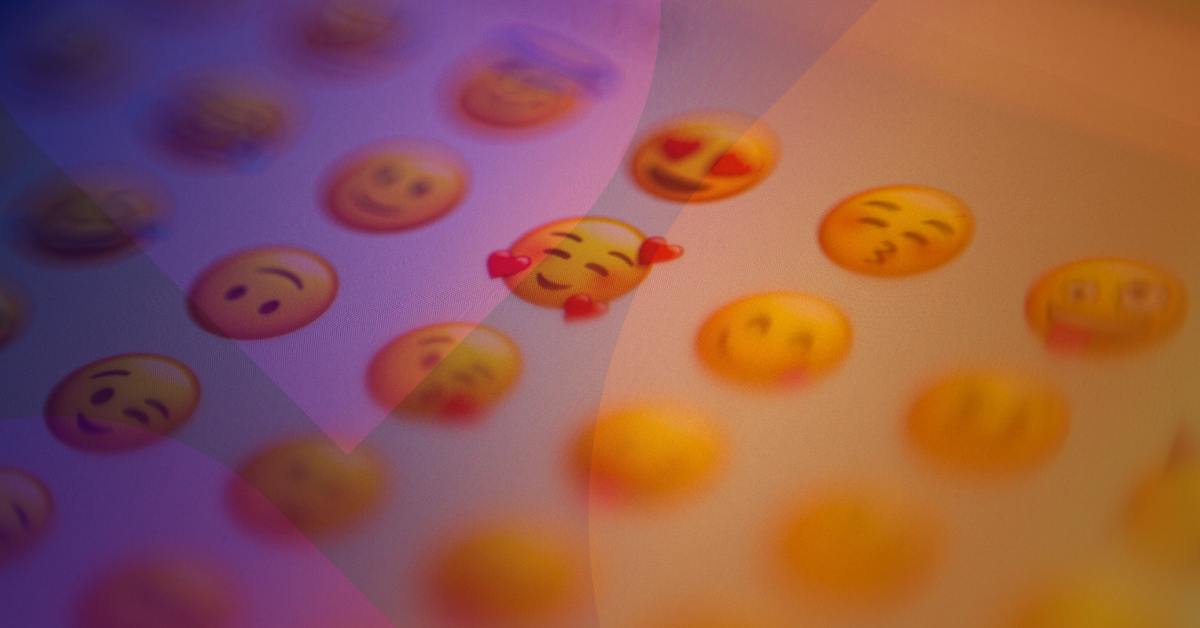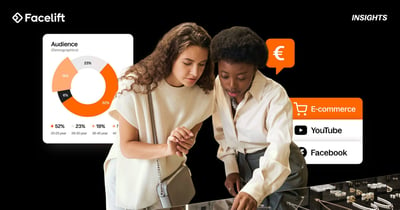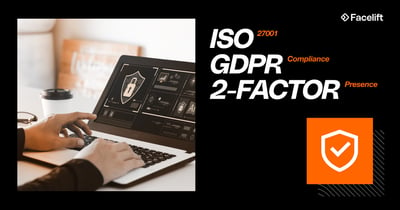Emojis have become an indispensable part of online communication. Nearly 150 emojis are now available by default in IOS 16.4, and more and more people are creating their own avatars.
Originally designed as simple symbols to show emotion, emojis have become an integral part of our digital conversations. But they're not just popular in personal conversations - emoji have also taken on an important role in social media marketing. In this article, we'll explore how emojis are impacting social media marketing.
Why use emojis in marketing?
Emojis offer several benefits in marketing, as they can improve communication, increase interaction with target audiences, and build brand loyalty. Here are some of the key benefits of emojis in marketing:
- Language diversity and global marketing: Emojis are a kind of universal language that is understood across language barriers. This can be beneficial in international marketing as emojis can convey information and emotions in a way that people from different cultures can understand.
- Emotional connection: Emojis are a powerful way to convey emotions and moods. They allow brands to visually and directly express feelings such as joy, excitement, empathy, or humor. This can lead to a stronger emotional connection between brand and customer.
- Get to the point: Emojis can convey complex ideas, feelings or actions in a compact form. They help convey information in a shorter and more concise way, which is especially beneficial on platforms with limited space, such as X.
- Attention and visibility: Emojis can grab attention and make content stand out visually. A well-placed emoji can help your message stand out in a crowded social media feed and generate more clicks or interactions.
- Brand identification: By choosing specific emoji, you can shape your brand's voice and identity. Consistent use of emojis can help your business be more easily recognized.
- Creativity and uniqueness: Choosing and combining emojis can provide creative ways to make your messages unique and original. You can make your content more interesting and differentiate your brand.
- Appeal to a younger audience: Emojis are especially popular with younger audiences and can help you connect with this demographic and capture their attention.
- Easier to communicate information: Emojis can make information easier to understand, especially when it comes to complicated concepts or instructions. An emoji can be a visual complement to text and improve readability.
Where can I use Emojis?
As a business, you can use emojis in marketing in a variety of ways to reinforce messages, encourage interaction with your audience, and build an emotional connection. Here are a few strategies for using emojis in marketing:
Social Media:
As the birthplace of emojis, social media has become a place where these visual symbols unleash their true power. Almost universally applicable and found on various social media platforms, it's hard to imagine posts, stories, reels, and even professional platforms like LinkedIn without emojis.
We'll go into more detail about each platform later in the article.
Not only do they add an emotional layer, but they also have the ability to amplify content in a compact form and communicate in a way that appeals to the digital generation.
From designing bios and profile descriptions to highlighting hashtags and community management, emojis play a critical role in audience interaction.
Even in paid social, emojis have proven to be extremely effective in drawing attention to campaigns and visually reinforcing the message. Of course, the success of emojis is not limited to social media campaigns; they can also be successfully transferred to the offline world in OOH or print.
Emojis in email marketing:
Emojis are a great way to make email marketing more engaging, personal, and effective.
- It starts in the subject line: Use emojis in the subject line to grab attention and increase your email open rate. An appropriate emoji can help the email stand out and create curiosity.
- Especially at the beginning of the email, emojis can give a friendly and inviting impression. Otherwise, they can be used in the rest of the text to highlight text passages or information.
- Social media icons: They are also emojis in a more remote sense and should not be missing from your email marketing. They can help strengthen your online presence and drive engagement.
Service channels & messenger marketing
Emojis can play a valuable role in Messenger marketing and customer communications to increase interaction and provide more human responses to customer inquiries. Here are some ways to use emojis in this context:
- Popular messenger channels: Platforms such as WhatsApp and Facebook Messenger are popular channels for customer communication. Emojis can be used in real-time replies for faster and more engaging interactions. They can also be used in automated chatbots or on other messenger platforms.
- Efficient Short Messaging: In the world of Messenger marketing, short messages are often efficient and time-saving. A simple emoji can often be a powerful response to customer queries or feedback. For example, a heart emoji in response to positive feedback can show that the company appreciates the feedback.
On- and offline events
Using emojis at tradeshows, events, or webinars can enrich communication, encourage interaction, and draw attention to specific messages or actions. Here are some ideas for using emojis in these contexts:
- Emojis on signs, banners, giveaways, or decorative elements to create mood and atmosphere.
- Emojis on nametags or badges to reflect attendees' personalities and provide conversation starters.
- On webinar slides to highlight key points or at the beginning as an icebreaker. Also popular on the closing slides for questions or as a thank you.
- In the webinar chat: Emojis can be used in the chat during the webinar to respond to questions or comments from attendees or to make the communication more lively.
- During the webinar for polls and surveys
What are the most popular emojis and what do they mean?
Emoji are undoubtedly subject to ever-changing trends. With each update and expansion of the emoji collections, new symbols appear and quickly gain popularity. However, there are some emojis that have maintained a remarkable popularity over the years. However, emojis should always be used in context to avoid misunderstandings. Here are some of the most popular emojis and their meanings:
Laughing face with tears:😂
- Strong bouts of laughter & sustained laughter.
- Situation: cheerfulness and joy.
Heart: ❤️
- Love, affection and positive emotions.
- Situation: expression of friendship and support.
Thumbs up: 👍
- Approval, favor or support.
- Situation: often used to show that something is good or to indicate positive reactions.
Smiling face with heart eyes: 😍
- Admiration, enthusiasm or infatuation.
- Situation: to show beauty, attraction or positive feelings about something or someone.
Teary face: 😢
- Sadness, regret, or compassion.
- Situation: used to express empathy or to respond to sad events or news.
Smiling face with sunglasses: 😎
- Coolness, self-confidence or relaxedness.
- Situation: often used to represent a serene attitude or joy at a success.
Fire: 🔥
- Intensity, excitement, or enthusiasm.
- Situation: often used to describe something as impressive or "hot".
Kissing face: 😘
- Affection, love, or expressing a kiss.
- Situation: often used to convey feelings of love or affection.
Winking face: 😉
- Sarcasm, humor or irony.
- Situation: this emoji is often used humorously to suggest that something is not entirely serious or to make a joke.
Monkey with eyes closed/ Can't See: 🙈
- Embarrassment, shyness, embarrassment or discomfort.
- Situation: unpleasant news or also humorously meant that someone would prefer to run away
- Variants 🙉 Monkey with ears covered / 🙊 Monkey with mouth covered.
Which social media channels should you use Emojis on?
In fact, there's hardly a social network that doesn't lend itself to the use of emojis! They can grab attention and enliven conversations almost anywhere. The specific use depends on the type of business, target audience and brand identity.
Instagram:
Emojis are widely used on Instagram and can be used here in comments, captions, stories and even bio descriptions. They can help make posts more engaging and increase interaction with followers. While the use of emojis in posts is already widespread, many businesses are hesitant to use emojis in their Instagram bio. I've included two very different examples of how emojis can look in your bio.

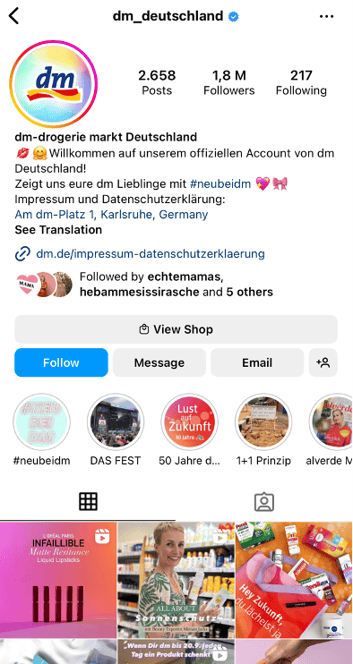
X (Twitter):
Emojis are commonly used in tweets and replies on X to liven up tweets, convey emotion, and highlight posts on the otherwise staid network. They can be especially useful because tweets often need to be concise and save characters due to their brevity.
Facebook:
On Facebook, emojis can be used in posts, comments, and Messenger messages. They can help make your posts friendlier and more inviting, and encourage interaction with followers.
LinkedIn:
On LinkedIn, you may want to use emojis more sparingly because the platform has a more professional feel-but it's not necessary to avoid emojis altogether. They can be used in moderation to brighten up posts and make them more human. How do I add emojis to posts on LinkedIn? There is a smiling emoji in the area below the post creator.
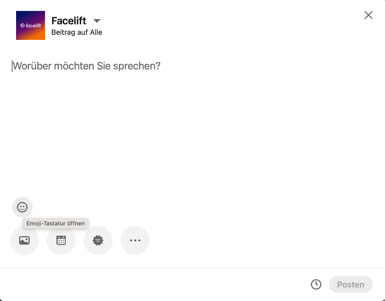
Clicking here opens the familiar emoji keyboard.
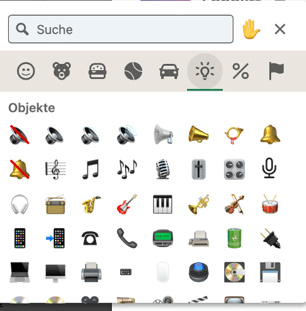
When you plan your post on Facelift, you have all the emojis at your fingertips. Many companies don't know which Emojis are appropriate for LinkedIn and shy away from using them. Emojis that look "professional" are especially popular. Here are some examples of the most popular LinkedIn emoji:
- 📣 Megaphone emoji: Announcements, news, or important information.
- 📅 Calendar emoji: to announce appointments, events or webinars.
- 💡 Light bulb emoji: To highlight creative ideas, innovations or suggestions.
- 📊 Chart emoji: To visually highlight statistics or data.
- 🔍 Magnifying glass emoji: Search for information or solutions.
- 👋 Waving hand emoji: Greet or start a message.
- ✔️ Hook emoji: Approval, success, or confirmation. To complete tasks or achieve milestones.
- 🙏 Hands together emoji: Gratitude or appreciation.
TikTok:
On TikTok, emojis are popular in video captions, comments, and descriptions. They can help make your TikTok content more creative and engaging.
Pinterest:
Emojis can also be used on Pinterest in captions and descriptions to make your pins stand out and attract more attention.
YouTube:
Emojis can be used in video titles, descriptions, and comments to make your YouTube content more visually interesting.
WhatsApp:
Emojis are predestined for customer communication on WhatsApp. The use of emojis on WhatsApp is manifold: welcome messages, notifications and reminders, birthday greetings, CTAs can also be supported by emojis.
Summary of emojis in marketing
Emojis are more than just colorful symbols - they are powerful tools in (social media) marketing. Brands can use them to convey emotions, succinctly formulate messages, express personality and build a strong bond with their followers.
Before using emojis in marketing, it's important to understand your audience and make sure the emojis you choose are appropriate and fitting. Adapt your communication to the incoming messages of your target audience.
Are you ready to take your social media marketing to the next level and see if Facelift is the next step? Then send us a no-obligation demo request.

